Latin American art bursts with life. It mixes old native traditions with European styles and modern ideas. The result? Some of the most colorful and powerful art you’ll ever see.
From street murals that tell political stories to dreamlike works and famous landscape paintings that blend reality with magic—Latin American artists break boundaries and create their own rules.
Let’s explore what makes this art special, the main art movements, and why it matters so much today.
Influential Latin American Art Movements
Latin American art has a rich and diverse history, shaped by Indigenous traditions, European colonial influences, and political movements. Explore the various art movements in Latin American art, from pre-1500 art to modern art today.
Pre-Columbian Art (Before 1500s)
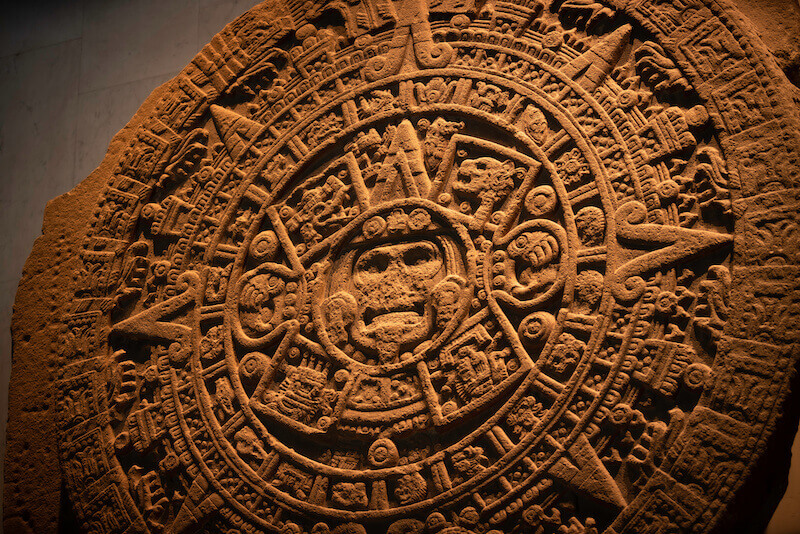
Long before European colonization, Indigenous civilizations like the Aztecs, Mayans, and Incas produced intricate sculptures, murals, ceramics, and textiles. These artworks were deeply connected to spirituality, mythology, and daily life.
Notable Characteristics:
- Monumental stone carvings and temple reliefs (e.g., Mayan stelae, Aztec sun stone)
- Gold and jade jewelry from the Muisca, Olmecs, and Andean cultures
- Codices and painted manuscripts illustrating historical and religious narratives
Famous Works and Artifacts
- Mayan Codices: Dresden Codex, Madrid Codex (Pre-Hispanic Mesoamerican books)
- Incan Quipus: Knot-based record-keeping systems
- Aztec Calendar Stone: A massive carved basalt sculpture
Colonial Art (1500s–1800s)
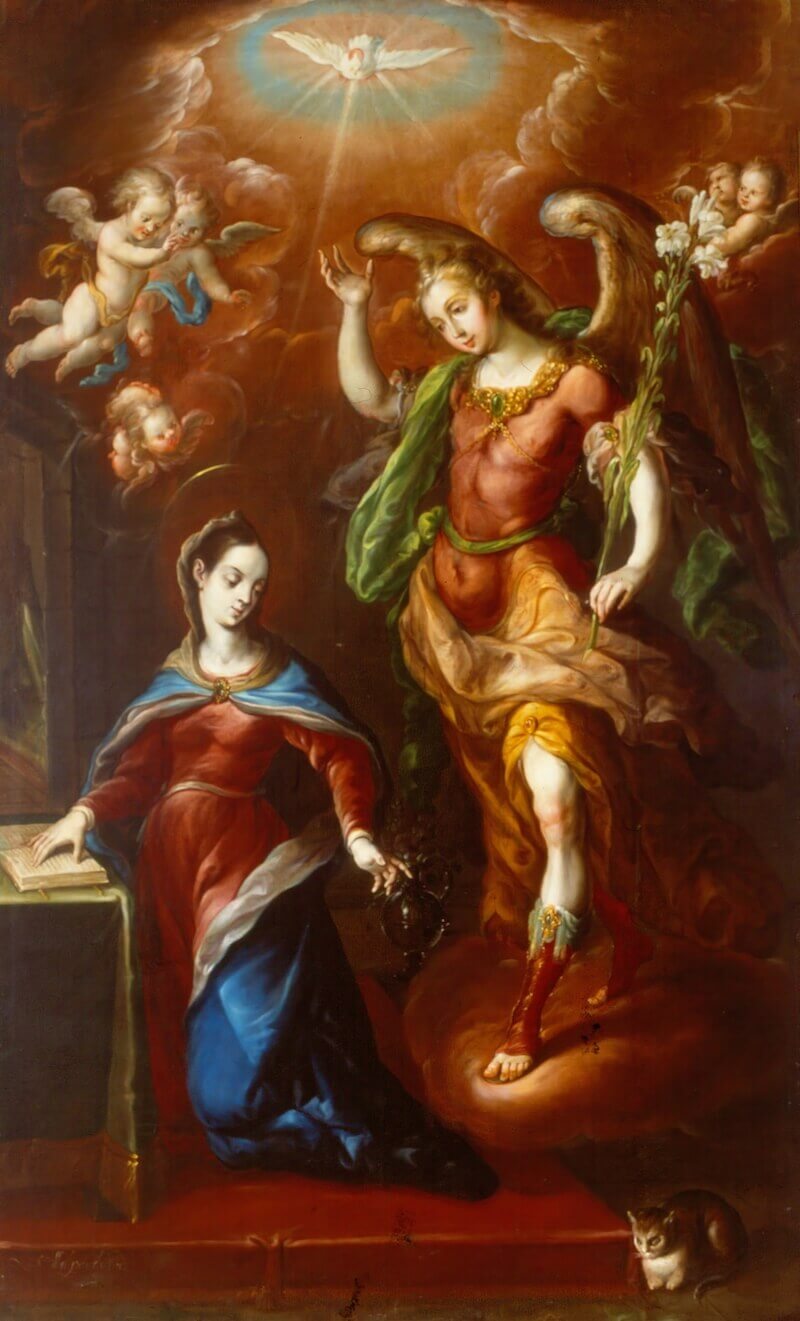
Spanish and Portuguese colonization upturned Latin America. Their Baroque and Renaissance styles merged with Indigenous techniques, creating religious and devotional art featuring dark color schemes and various materials.
Consider these key features of Colonial art to decide if it has a place in your home.
Notable Characteristics:
- Catholic iconography: Paintings and sculptures of saints and biblical figures
- Casta paintings: A unique genre that depicted racial and social hierarchies in colonial Latin America
- Mestizo art: A fusion of European realism with Indigenous symbolism and techniques
Famous Artists
- Cristóbal de Villalpando (Mexico)
- Miguel Cabrera (Mexico)
- Aleijadinho (Brazil)
Academic and Romanticism (1800s–Early 1900s)
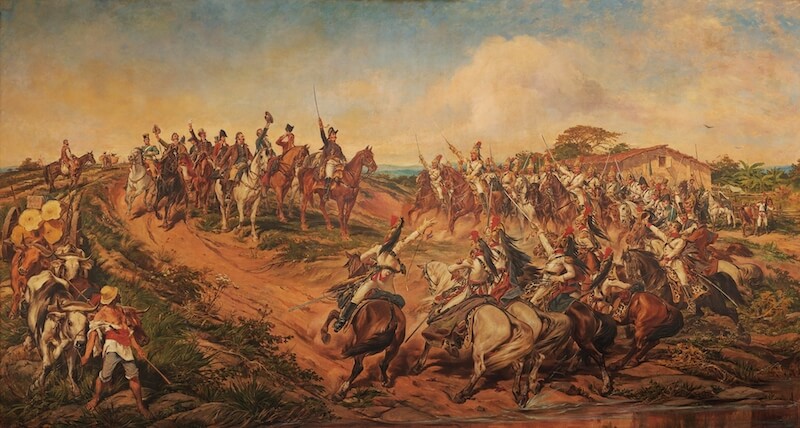
As Latin American countries gained independence, national identity, and historical themes became central to art. European-style academic realism, Romanticism, and neoclassicism influenced this period and included several notable works.
Notable Characteristics:
- Nationalistic themes: Paintings depicting wars of independence, Indigenous culture, and historical events
- Portraiture and landscapes: Influenced by European realism and Romanticism
- History painting: Large-scale paintings that celebrated national heroes
Famous Artists:
- Juan Manuel Blanes (Uruguay)
- José María Velasco (Mexico)
- Pedro Américo (Brazil)
Mexican Muralism (1920s–1950s)
One of the most influential movements in Latin American art, Mexican Muralism emerged after the Mexican Revolution (1910–1920). Some of the most famous Mexican artists created large-scale murals to convey social, political, and revolutionary messages.
Notable Characteristics:
- Bold, large-scale fresco murals in public spaces
- Themes of social justice, revolution, and Indigenous identity
- Realist and dynamic compositions
Famous Artists:
- Diego Rivera
- José Clemente Orozco
- David Alfaro Siqueiros
Surrealism and Magical Realism (1930s–1950s)
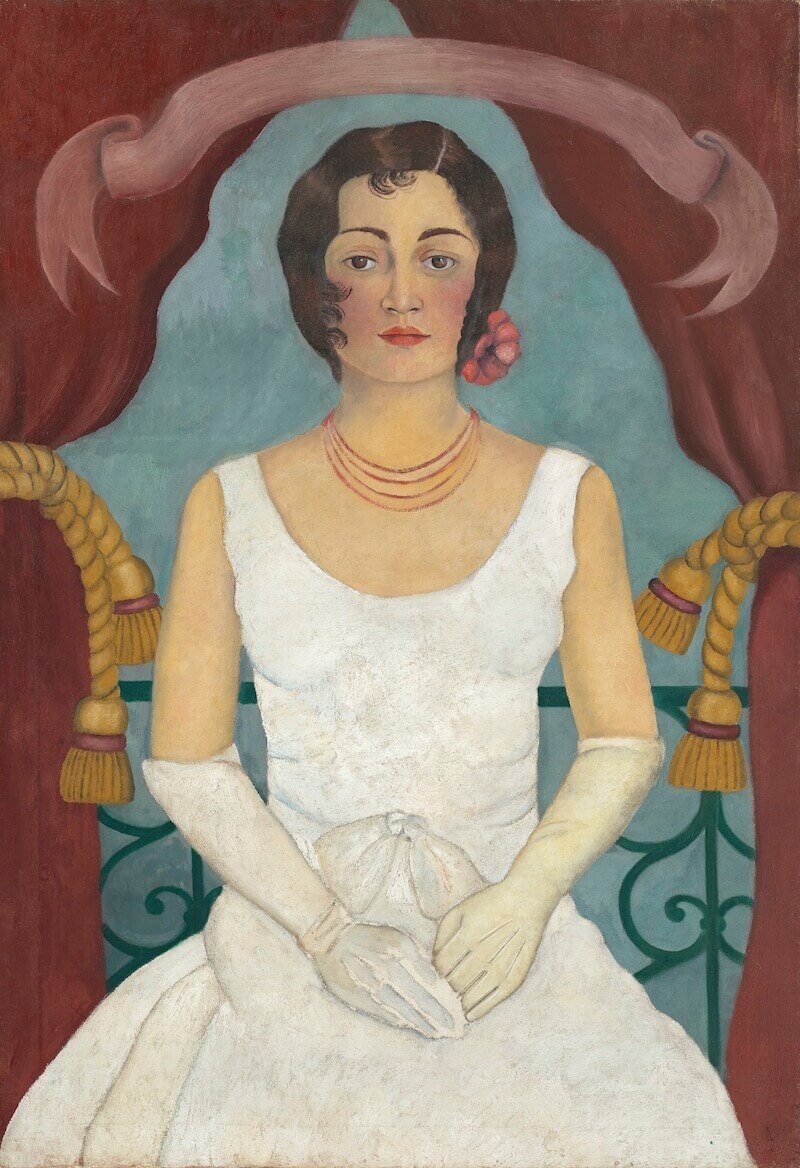
Latin American artists blended surrealism with local myths, folklore, and political themes, creating a unique form of mystical and dreamlike realism.
Traditional Mexican color palettes took root, along with other key features of surrealism and magical realism.
Notable Characteristics:
- Psychological and dreamlike imagery
- Mythology, folklore, and Indigenous influences
- Strong personal and feminist themes (particularly in Frida Kahlo’s work)
Famous Artists:
- Frida Kahlo (Mexico)
- Wifredo Lam (Cuba)
- Leonora Carrington (Mexico)
Neo-Mexicanism (1980s–1990s, Mexico)
A response to both Mexican muralism and international postmodern art, Neo-Mexicanism explored national identity, history, pop culture, and surrealism with a contemporary twist.
Notable Characteristics:
- Blending of pre-Hispanic, colonial, and contemporary imagery
- Bright colors, religious symbolism, and Mexican folklore
- Often infused with irony and social commentary
Famous Artists:
- Julio Galán
- Mónica Castillo
Latin American Geometric Abstraction (1950s–Present)
Inspired by European Constructivism and Bauhaus design, artists in Brazil, Venezuela, and Argentina explored geometric abstraction, optical illusions, and kinetic movement.
Notable Characteristics:
- Abstract geometric shapes and structured compositions
- Use of movement and perception (kinetic art)
- Minimalist yet visually striking
Famous Artists:
- Jesús Rafael Soto (Venezuela)
- Carlos Cruz-Diez (Venezuela)
- Lygia Clark (Brazil)
Neo-Concretism (1959–1961, Brazil)
A Brazilian response to geometric abstraction, Neo-Concretism emphasized subjectivity, organic forms, and interactive art.
Notable Characteristics:
- Humanizing geometric abstraction
- Encouraging viewer participation in art
- Experimental use of color, shape, and movement
Famous Artists:
- Hélio Oiticica
- Lygia Pape
- Amílcar de Castro
Street Art & Urban Interventions (2000s–Present, Various Countries)
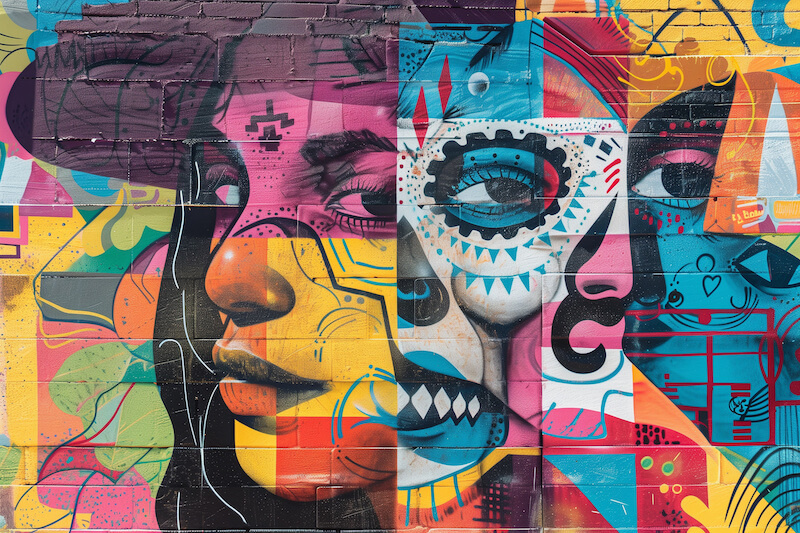
Latin America has a thriving street art movement, blending muralism, graffiti, and public installations to reclaim urban spaces.
Today, this movement’s influence is seen throughout the world, providing everything from inspiration for wall art to symbols of social movements.
Notable Characteristics:
- Brightly colored large-scale murals
- Political and social themes addressing inequality and community struggles
- A mix of Indigenous symbolism and contemporary pop culture
Famous Artists:
- Os Gêmeos (Brazil)
- INTI (Chile)
- Jade Rivera (Peru)
What Makes Latin American Art Special?
While each country has its own style, several overlapping themes and techniques make Latin American art stand out.
Storytelling Through Symbolism and Narrative
Latin American art is often highly narrative, using visual storytelling to capture history, mythology, and contemporary struggles. These works use the following strategies:
- Indigenous mythology and cosmology: Gods, nature spirits, and ancestral legends influence works across the region (e.g., Incan sun symbols, Aztec codices).
- Historical and political narratives: Art as a tool for revolution, resistance, and identity formation, seen in muralism, conceptual art, and protest art
- Syncretism: A blend of Indigenous beliefs, Catholicism, and African spiritual traditions, creating hybrid religious and cultural imagery
Example: Diego Rivera’s murals narrate Mexico’s history from pre-Columbian times to the revolution, while contemporary artists use mixed media to document political struggles.
Bold Colors and Dramatic Contrast
Latin American art is known for rich, expressive color palettes, often inspired by nature, folk traditions, and spiritual symbolism.
- Earthy reds, oranges, and browns: Red and its complementary colors represent the land, Indigenous identity, and resistance
- Bright yellows and golds: Associated with the sun, divine power, and pre-Columbian goldwork, yellows and golds are popular interior design color trends today
- Deep blues and greens: Evoke tropical landscapes, spirituality, and the supernatural
- High-contrast and saturation: Inspired by Mexican folk art, Andean textiles, and Caribbean vibrancy
Example: The psychedelic colors of alebrijes, the striking contrasts in Frida Kahlo’s self-portraits, and the vivid palettes of Brazilian modernist painters
Magic, Mysticism, and Surrealism
Latin American art often blends reality with dreamlike, symbolic, or mystical elements, influenced by Indigenous spirituality and Magical Realism in literature.
- Hybrid creatures and shapeshifters: Seen in alebrijes and Amazonian art
- Floating or dismembered figures: Exploring the fragility of identity and body (e.g., Frida Kahlo)
- Dreamlike architecture and impossible spaces: Found in modern surrealist paintings
- Cosmic and astronomical references: Influenced by Incan, Mayan, and Aztec astronomy
Example: The dreamlike compositions of Leonora Carrington, Wifredo Lam, and Remedios Varo, which blend surrealism with Latin American folklore
Death and the Afterlife as Celebration

Unlike Western depictions of death as purely somber, Latin American art embraces it with celebration, humor, and reverence—along with masterful use of different colors that go with black—in the following ways:
- Día de los Muertos aesthetics: Colorful sugar skulls, skeletons, and festive altars
- Memento mori and vanitas themes: Skulls, flowers, and time-related symbols appear in colonial and contemporary art
- Catholic and Indigenous funeral rituals: Blended in santos (saint paintings), ex-votos, and Mexican tinwork
Example: José Guadalupe Posada’s “La Calavera Catrina”, which satirizes death with elegance and irony
Fusion of European, Indigenous, and African Influences
Latin American art is inherently multicultural, reflecting centuries of cultural fusion in the following ways:
- Catholic and Indigenous art: Seen in retablos, santos, and syncretic religious imagery
- African diaspora influence: Strong in Cuban, Brazilian, and Caribbean art, incorporating Yoruba deities and spiritual practices
- Colonial and Baroque ornamentation: Elaborate detailing, seen in churches and religious paintings
Example: Afro-Cuban artist Wifredo Lam’s “The Jungle,” which combines African symbolism, surrealism, and Caribbean spiritual themes
The Global Influence of Latin American Art
Latin American artists have shaped art worldwide. Their ideas and styles show up in museums, on city walls, and in pop culture globally.
Mexican Muralism and U.S. Public Art: The works of Diego Rivera, José Clemente Orozco, and David Alfaro Siqueiros inspired American muralists. This can be seen in the New Deal-era WPA muralists, and contemporary street artists.
Brazilian Constructivism and Kinetic Art: Latin American abstractionists like Jesús Rafael Soto (Venezuela) and Lygia Clark (Brazil) helped shape geometric and kinetic art in Europe and beyond.
Surrealism and Magical Realism: Artists like Frida Kahlo and Remedios Varo brought Latin American mysticism and dreamlike storytelling into the international surrealist movement.
Latin American Street Art Influence: Artists like Os Gêmeos (Brazil) and INTI (Chile) have gained international fame for their large-scale murals.
Cinema and Digital Art: The animated film Coco (2017) and digital reinterpretations of alebrijes and Day of the Dead imagery showcase Latin American iconography on the global stage.
Pop Culture and Fashion: The vibrant colors and surrealist motifs of Frida Kahlo continue to inspire fashion, advertising, and interior design worldwide.
Latin America’s Rich Artistic Legacy
Latin American art keeps evolving and inspiring people worldwide. Its bold colors, powerful stories, and mix of traditions speak to people from all backgrounds.
New generations of artists build on this rich history while being connected to the modern day. They use both traditional techniques and new digital tools to create art that’s both timeless and totally current.
Whether through massive street murals, surreal paintings, or cutting-edge digital works, Latin American art remains a powerful voice for identity and creative expression.




